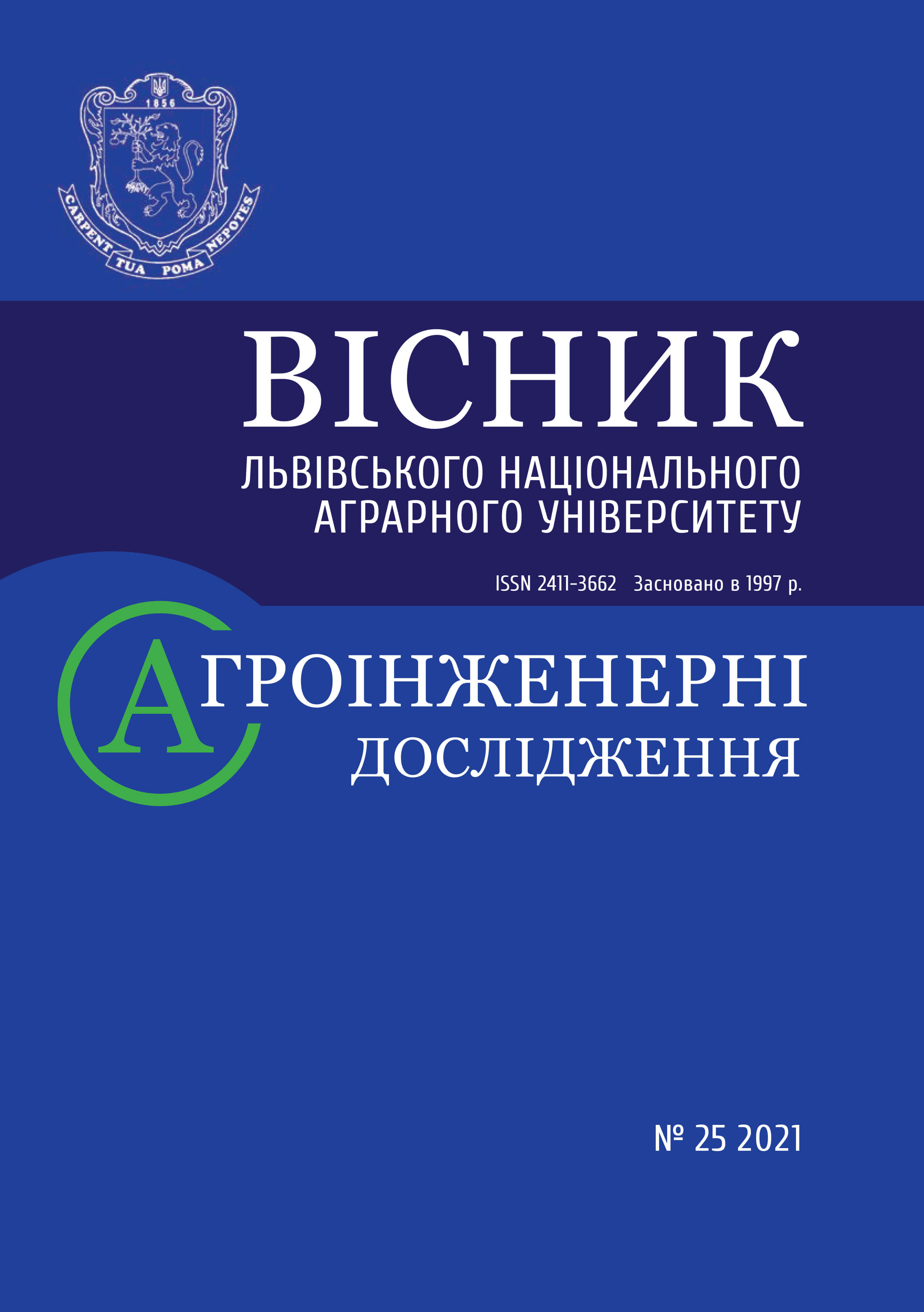On calculation of the temperature of raw material self-heating in cylindrical tanks
DOI:
https://doi.org/10.31734/agroengineering2021.25.021Keywords:
cylindrical tanks, self-heating core, temperature field, Fourier-Bessel series, identification of cell parameters, forecast of temperature increase over timeAbstract
The article considers the temperature field of organic raw materials in a cylindrical silo under presence of a rod center of self-heating of circular cross section. The analytical solution of the nonstationary thermal conductivity problem is expressed by the Fourier-Bessel series, with different variants of distribution of the thermal sources in the self-heating center. It is shown that a uniform distribution (homogeneous cell) gives the fastest increase in temperature. The convergence of the series describing the temperature field is analyzed. The convergence has been found to improve over time, but it is very slow at the beginning of the self-heating process. A method for accelerating the convergence of the solutions of the problem for individual variants of the thermal sources distribution is proposed. Graphs are constructed to identify radius of the cell and further determine the intensity of heat sources in it, with three options for their distribution. Identification is based on experimental measurement of the temperature increase in the center of the cell for the selected time. It limits the method possibilities, because at large cell sizes, the increase in temperature in its center becomes linear, as in an unlimited body with a uniform distribution of thermal sources. Therefore, the constructed graphs lose the separability of large cell sizes. Examples of identification using graphs are given. The research describes a possibility to make an estimated forecast of development of the self-heating temperature after conducted identification. The ontained analytical solution of non-stationary problems of heat conductivity in combination with the experimental measuring of temperature in the self-heating center provides for determination of the parameters of the internally located temperature self-projection.
References
Abramov, Yu. A., & Kirochkin, A. Yu. (2000). Matematicheslie modeli teplovyikh polei nasyipi rastitelnogo syirya s uchetom temperaturyi okruzhayushchey sredyi. Pozharovzryivobezopasnost, 3, 21–27. [in Russian].
Abramov, Yu. A., Kirochkin, A. Yu., & Otkidach, D. N. (1999). Mtematicheskaya model teplovogo polya zernovoy nasyipi. Pozharovzriyvobezopasnost, 2, 25–29. [in Russian].
Abramovits, M., & Stigan, I. (1979). Spravochnik po spetsyialnyim funktsyiam (s formulami, grafikami i matematicheskimi tablitsami). Moscow: Nauka. [in Russian].
Alboshchiy, V. M. (2000). Razrabotka metodov a sredst pozharnoy bezopasnosti khranilishch rastitelnogo syirya. (Candidate’s thesis). Kharkov. [in Russian].
Degtyarev, A. G., & Vogman, L. P. (1999). Opticheskiy sposob obnaruzheniya samovozgoraniya i goreniya v khranilishchakh selskokhozaystvennogo syisya.Pozharovzryivobezopasnost, 6, 37–41. [in Russian].
Eremenko, S. A., & Olshanskiy, V. P. (2003). Zadachi nestatsyionarnoi teploprovodnosti pri samonagrevanii syisya plastovyimi ochagami. Kharkov: KhNADU. [in Russian].
Gorshkov, V. I., Korolchenko, I. A., Kazakov, A. V., & Sokolov, D. N. (2007). Opredeleniye vremeni induktsyii pri ochagovom samovozgoranii materialov. Pozharnaya bezopasnost, 1, 66–70. [in Russian].
Gradshtein, I. S., & Ryzhik, I. M. (1962). Tablitsy integrallov sum, ryadov i proizvedeniy.. Moscow: Fizmatgiz.
Kirochkin, A. Yu., & Abramov, Yu. A. (2000). Raspredeleniye temperaturyi v gnezdovom organicheskom veshchestve. Problemyi pozharobezopasnosti, 7, 106–111. [in Russian].
Krisa, I. A., & Olshanskiy, V. P. (2003). Statsyionarnyi temperaturnyie polia pri nagrevanii rastitelnogo syirya. Kiev: Pozhinformtechnika. [in Russian].
Larin, A. N., Olshanskiy, V. P., & Trigub, V. V. (2003). Zadachi nestatsyionarnoy teploprovodnosti pri samonagrevanii syisia gnezdovyimi ochagami. Kharkov: KhNADU. [in Russian].
Olshanskii, V. P. (2001). Temperature field of bedded self-heating of a bankin a silo. Combustion, Explossion, and Shock Waves, 37 (1), 53–56.
Olshanskii, V. P. (2002). Temperature field of clusterself-heating of a bankin a silo. Combustion, Explossion, and Shock Waves, 38 (6), 728–732.
Olshanskiy, V. P., & Trigub, V. V. (2000). K raschetu temperaturyi samonagrevaniya rastitelnogo syirya gnezdovyim sfericheskim ochagom. Vestnikn KhGPU. Novyie resheniya v sovremennyikh tekhnologiyakh, 118, 43–45. [in Russian].
Orlikova, V. P., & Volynets, V. V. (2019). Izuchenie ochagov samovozgoraniya organicheskikh veshchestv. Pozharnaya bezopasnost:problemyi, puti sovershenstvovaniya, 2 (3), 169–177. [in Russian].
Sokolov, D. N. (2017). Otsnka vozmozhnosti samovozgoraniya syirya v silosakh elevator. Innovatsyinnyie tekhnologii proizvodstva i khraneniya materialnyikh tsennostey dlya gosudarstvennyikh nuzhd., 7, 284–287. [in Russian].
Sukhareva, A. R., & Shukhanov, S. N. (2018). Sostoyanie voprosa samonagrevaniya khlebnoy massyi v skirdakh. Izvestiya Orenburgskogo gosudarstvennogo agrarnogo unuversuteta, 3 (71), 165–166. [in Russian].
Vogman, L. P., Gorshkov, V. I., & Degtyarev, A. G. (1993). Pozharnaya bezopasnost elevatorov. Moscow: Stroyizdat. [in Russian].
Yanke, E., Emde, F., & Lesh, F. (1977). Sppetsyialnyie funktsii. Moscow: Nauka. [in Russian].


